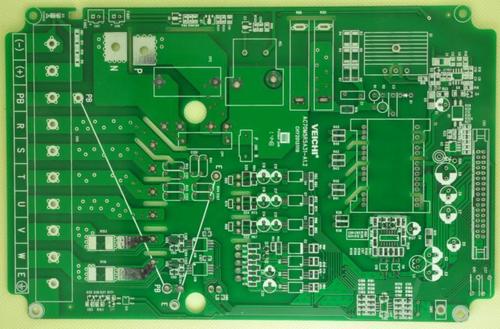 +86 755 2794 4155
+86 755 2794 4155  sales@knownpcb.com
sales@knownpcb.com
-
Shenzhen KNOWNPCB Technology Co., Ltd.
 +86 755 2794 4155
+86 755 2794 4155  sales@knownpcb.com
sales@knownpcb.com
 2025-05-10
2025-05-10
 962
962

Printed Circuit Board (PCB) impedance testing is a critical process in PCB design and manufacturing, playing a fundamental role in ensuring the reliable operation of electronic circuits. Impedance refers to the opposition that a circuit presents to the flow of alternating current (AC), and it is a key parameter that affects signal integrity in high - speed digital and analog circuits.
In high - speed digital circuits, maintaining proper impedance control is essential. As data transfer rates increase, signals travel at higher frequencies, and factors such as signal reflections, crosstalk, and attenuation become more pronounced. If the impedance of the PCB traces is not properly matched to the impedance of the connected components (such as integrated circuits), signal reflections occur when the signal reaches the end of the trace or encounters a change in impedance. These reflections can cause the signal to distort, resulting in errors in data transmission, such as bit - errors in digital communication. By performing impedance testing on PCBs, designers can ensure that the impedance of the traces is consistent and matches the requirements of the circuit, minimizing signal reflections and maintaining signal integrity.
Impedance testing also helps in preventing crosstalk between adjacent traces on the PCB. Crosstalk occurs when signals on one trace interfere with signals on neighboring traces. Inaccurate impedance values can exacerbate crosstalk, especially in high - density PCB layouts where traces are closely packed. By carefully controlling and testing the impedance of each trace, designers can reduce the likelihood of crosstalk, ensuring that each signal travels along its intended path without interference from other signals.
In analog circuits, impedance matching is equally important. For example, in audio amplifiers or radio frequency (RF) circuits, proper impedance matching between components ensures maximum power transfer and optimal performance. If the impedance of the source and the load are not matched, a significant amount of power can be reflected back, leading to reduced efficiency and potential damage to the components. PCB impedance testing allows engineers to verify that the impedance values of the traces and components are compatible, enabling efficient power transfer and accurate signal amplification.
Furthermore, impedance testing is crucial during the PCB manufacturing process. Variations in the PCB manufacturing process, such as differences in trace width, thickness of the dielectric material, and copper plating, can affect the impedance of the traces. By performing impedance testing on manufactured PCBs, manufacturers can identify and correct any manufacturing defects that may impact impedance. This helps in ensuring that the final product meets the design specifications and functions reliably in the intended application. Overall, PCB impedance testing is an indispensable process that contributes to the performance, reliability, and functionality of electronic circuits in a wide range of applications.

Or call +86 755 2794 4155
Inquiry Now

